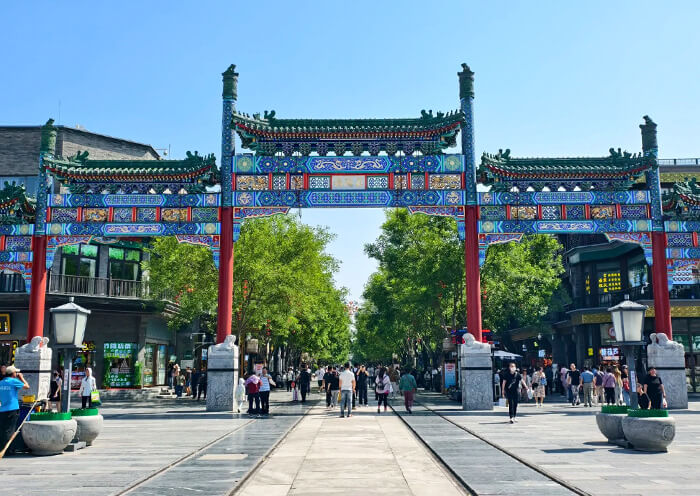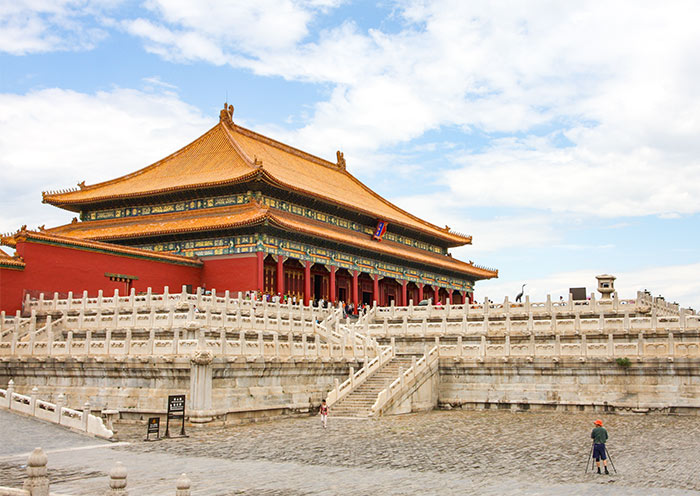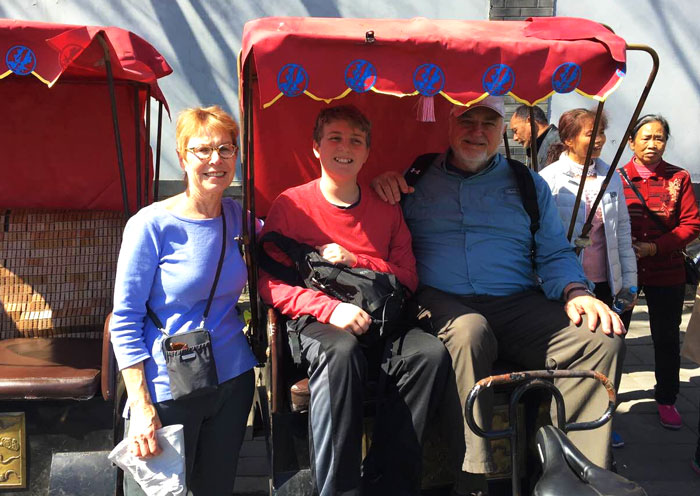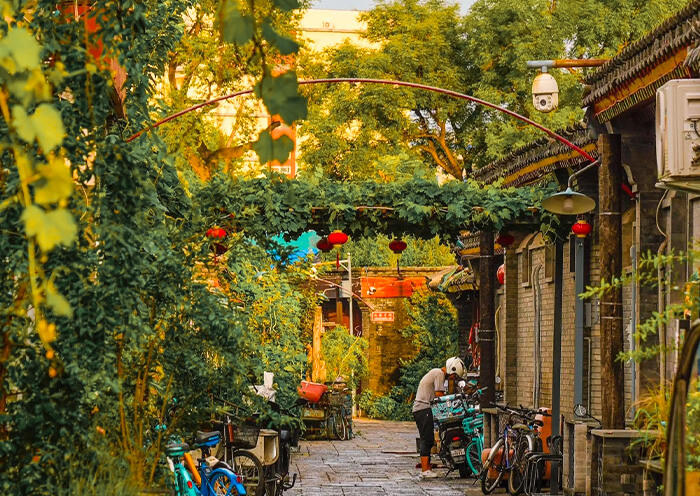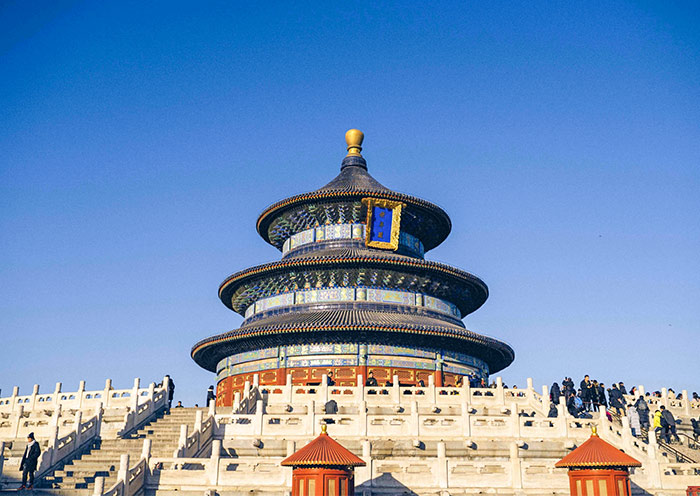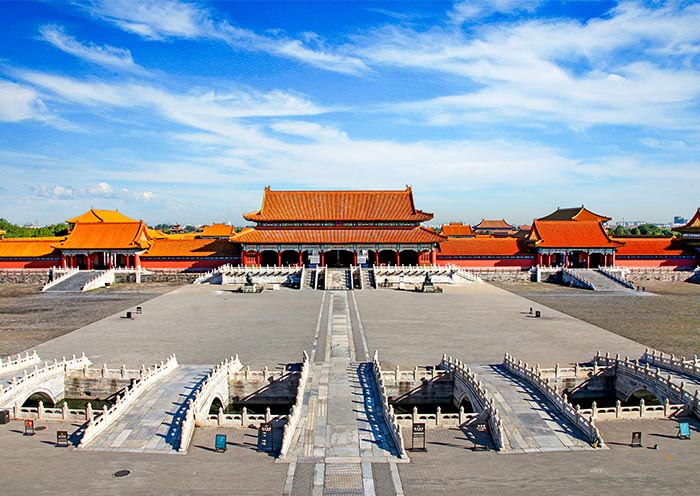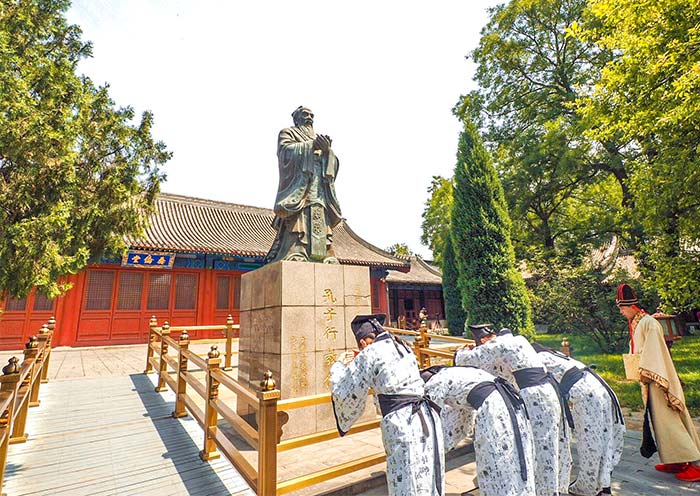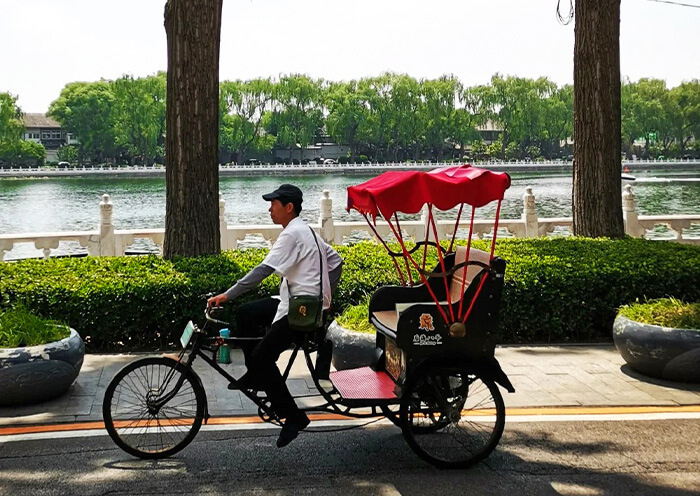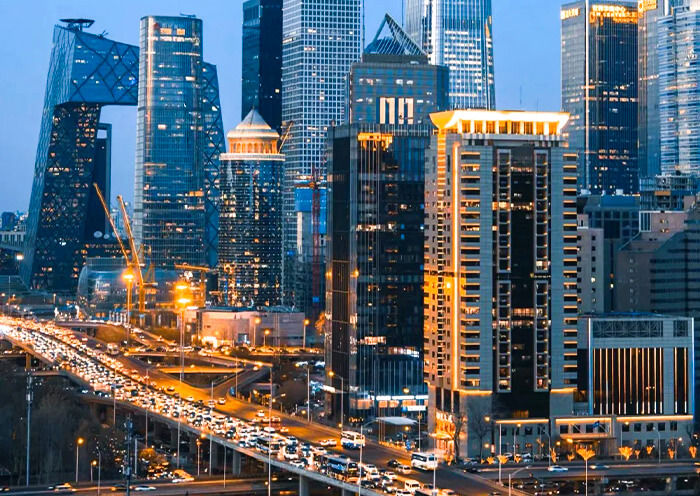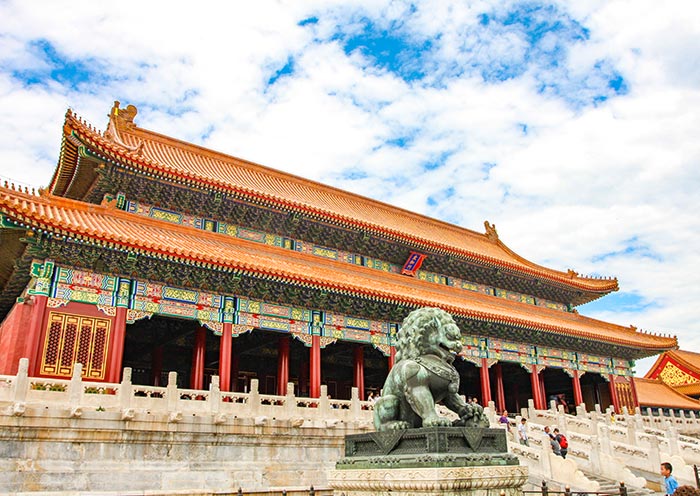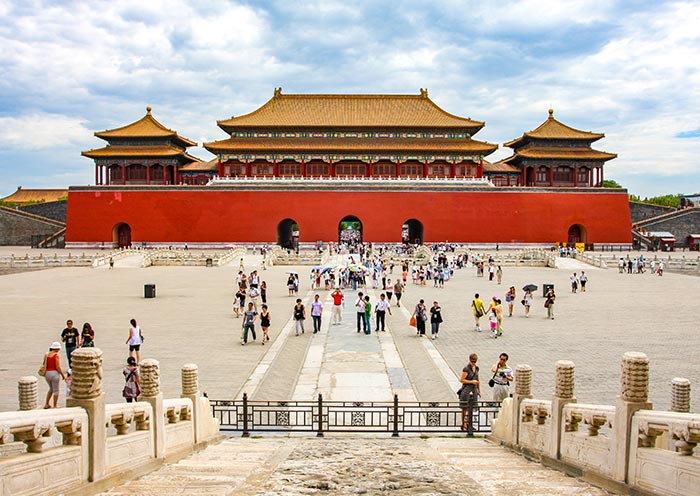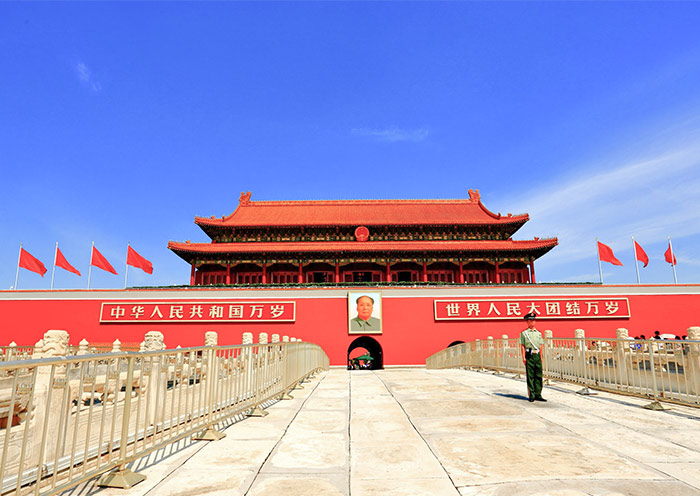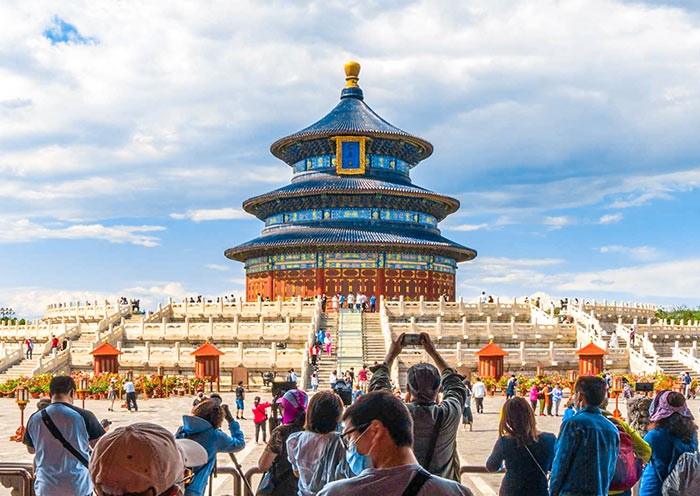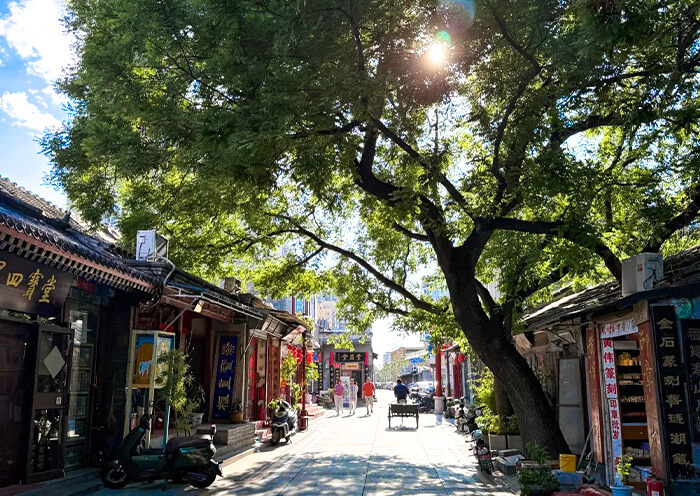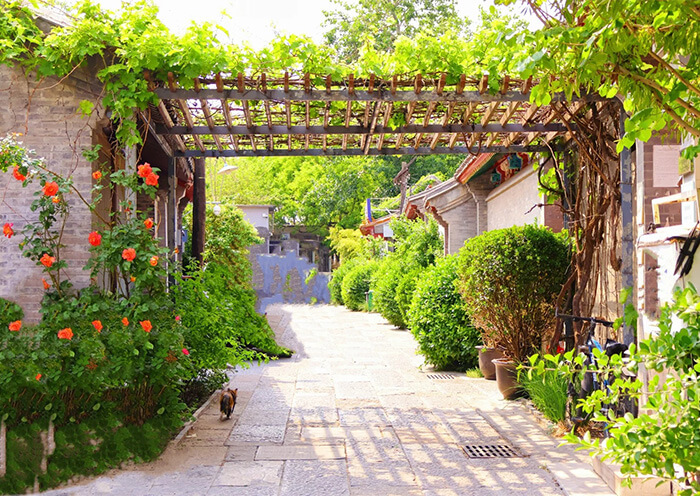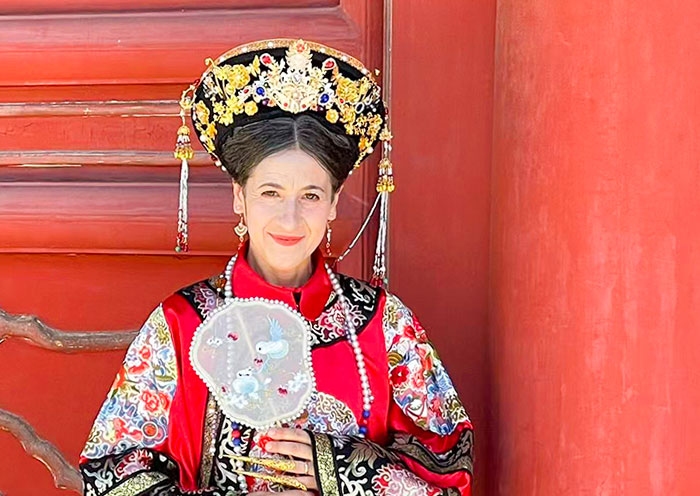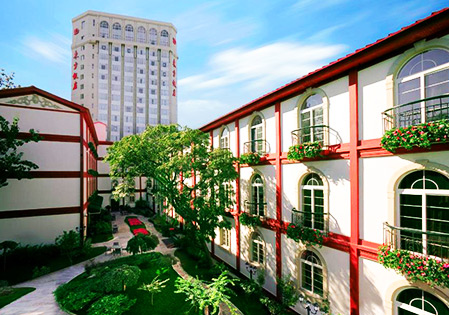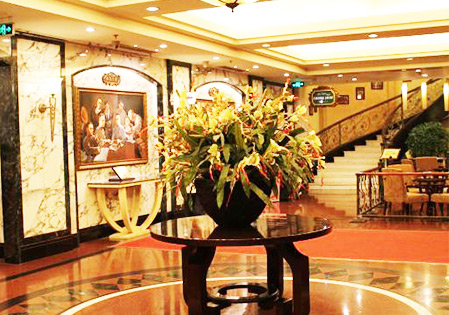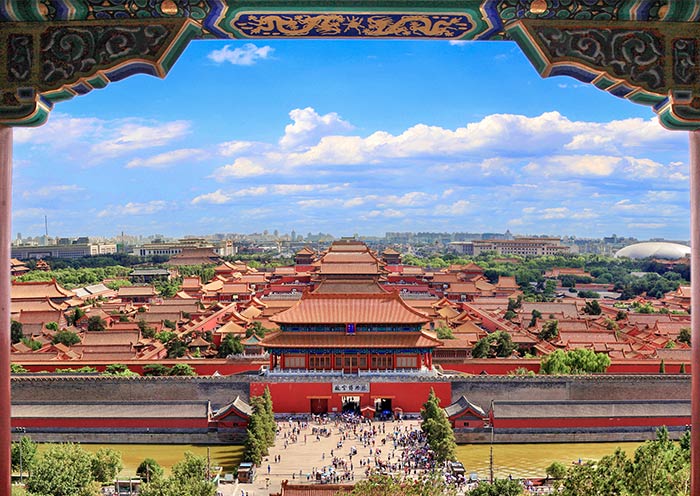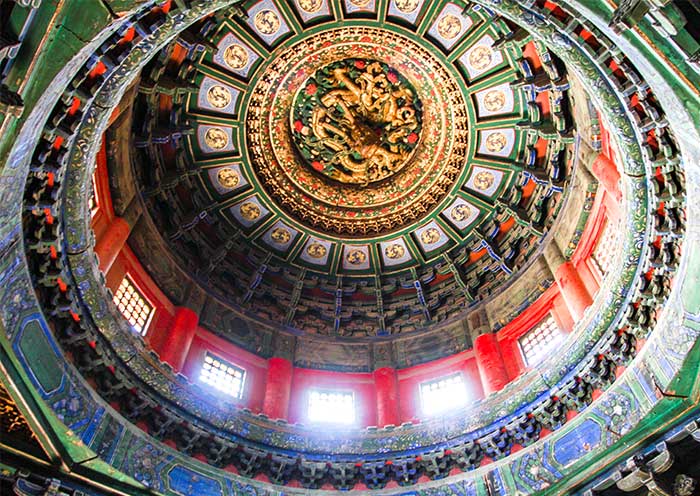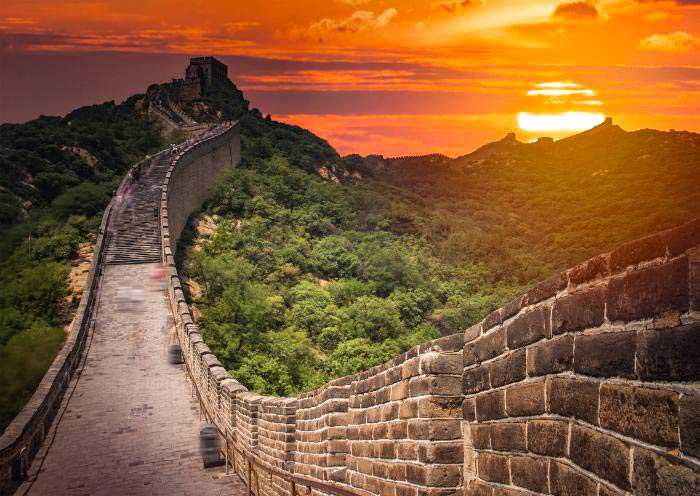In the morning, you will visit Lama Temple (Yonghe Palace). The Lama Temple (Yonghe Temple), is also known as the "Palace of Peace and Harmony". It was the birthplace of both the Yongzheng Emperor (1678-1735) and the Qianlong Emperor (1736-1796) of the Qing Dynasty. As the biggest temple of Tibetan Buddhism is located in the heart of Beijing, there are three treasures for you to explore: the largest sandalwood Buddha in the world, the bronze Buddhas of past, present, and future, and the 500-Arhat-Hill.
Then you will visit the Beijing Confucius Temple and Imperial College Museum that is next to the Lama Temple. The museum is consisting of two parts: Confucius Temple (Kongmiao) and Imperial College Museum (Guozijian). Kongmiao is the place where people paid homage to Confucius during the Yuan Dynasty (1271-1368), Ming Dynasty (1368-1644), and Qing Dynasty (1644-1911). Confucius is the greatest thinker and educationalist in ancient China. Guozijian (Imperial academy) is a kind of university/college in ancient China that can be traced back to the Sui Dynasty (581–618). Guozijian is also the place where the Emperor personally lectures. The college was constructed right next to the temple in accordance with Chinese tradition where a temple is always to the left of a school. This museum is a good place for you to learn more about ancient China's education system and ancient buildings.
During the lunch time, you can also enjoy a relaxing time exploring the ordinary local life through the famous Hutongs.
Dongcheng Hutongs - Wudaoying, Family Visit, Drum Tower, DIY: Visit Wudaoying Hutong, which is near the museum. It is the coolest non-touristy hutong alleyway street in all of Beijing. Travel through the narrow alleys with many featured shops standing on both sides. You can try Old Beijing yogurt and dumpling for lunch here before the exciting Hutong Family Visit. It is a great experience to communicate with the Beijingers who grow up in the Hutongs by listening to their stories about Hutong and typical lifestyle in the Hutong.
In the afternoon, you can have a bird's eyes view of the hutong area from the Drum Tower, and you will have the chance to view the drum performance there. After that, you will have 30 minutes to try a Chinese traditional handicraft, choosing between calligraphy learning, Peking Opera face mask painting, or paper-cutting.
Xicheng Hutongs - Yandaixiejie Street, Shichahai Rickshaw Tour or Cultural Hutongs Strolling: Then, you can hike in the Yandaixiejie Street, the oldest commercial street (about 800 years) and one of the oldest and top 10 popular hutongs in Beijing. Yandaixie Street, which means Skewed Tobacco Pouch Street in Chinese, is a 232-meter-long Hutong. During the Qing Dynasty, people were fond of smoking and carried tobacco pouches (Yandai) with them wherever they went. As a result, many tobacco shops (selling smoking sets) opened on this skewed (xie) street, giving rise to its name. Now you can still purchase tobacco pouches of various sizes and shapes there, including porcelain ones, jade ones, wooden ones, and bronze ones. Located close to the Shichahai Park and Nanluoguxiang Hutong, Yandaixiejie is also a cultural street, where many quadrangle dwellings (Si He Yuan) are dotted, attracting millions of visitors each year.
Next, you have two ways to further explore:
- Option 1 (Local Vibe): Sample Hutong food and take a Rickshaw Tour through Shichahai Area, viewing the Hutongs, Yinding Bridge, and bustling bar street.
- Option 2 (Deep Culture): Stroll with locals to discover former residences of celebrities, traditional gardens, Peking Opera, and authentic princely mansions.
Tip: If time is limited, choose Dongcheng or Xicheng district based on your preference.
Have a good rest tonight.
